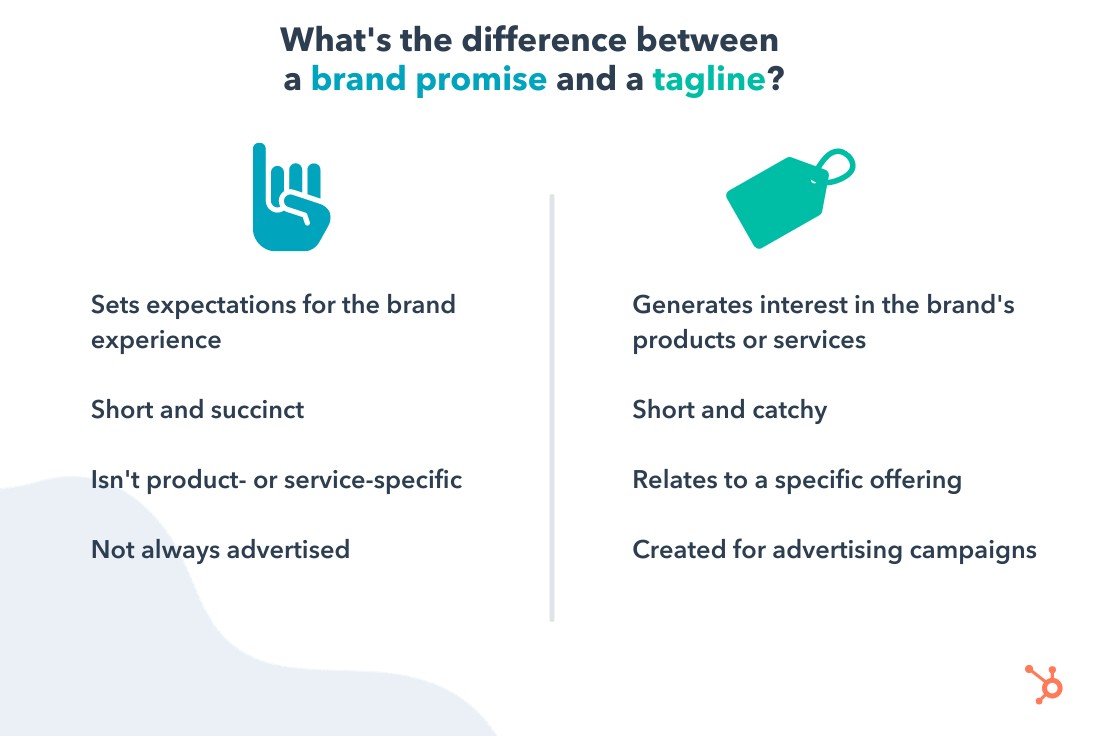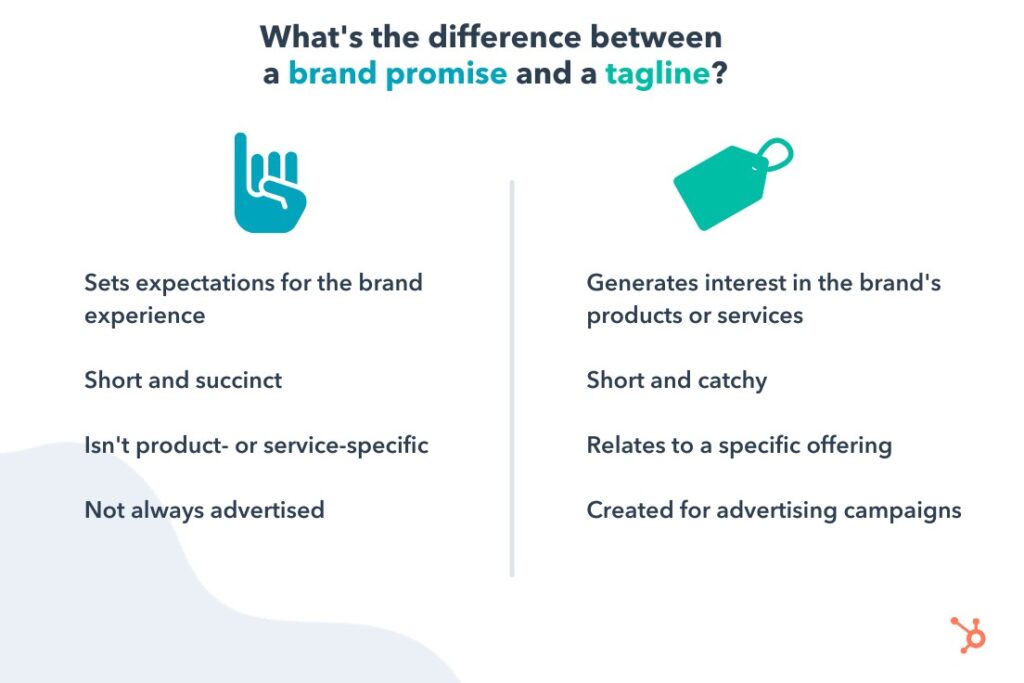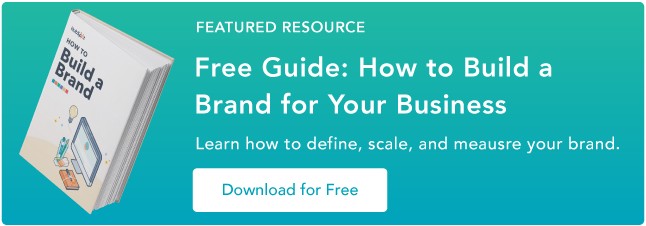If you're a decent human being, you always honor a pinky promise.
For the uninitiated, a pinky promise is usually between two people and it holds more weight than a spit shake, legal contract, verbal agreement, and "I swear on my [insert family member]" statements combined. It's part of our social contract – once it's been agreed upon, it cannot be broken.
A brand promise is the scaled, commercial version of the pinky promise, with the brand holding up one finger and its target audience holding up the other.
Except, in this case, breaking it won't just ruin your reputation, it can impact your revenue.
Let's talk about how to create a brand promise and see examples from popular brands.
What is a brand promise?
A brand promise reveals what consumers can expect from a brand across all touchpoints. It serves as a company's foundational value and informs every aspect of the company, from its messaging to its customer service.
Your brand promise should be central to your company, something that remains constant as it grows and evolves.
Not every brand promise is explicit. In many cases, it's more of an internal mantra that's shared with employees, investors, and partners. However, when you have built a strong brand identity and clear messaging, your brand promise can be assumed by your target audience.
There's often some confusion between a brand promise and a tagline, so let's break it down.

While it can be just as short as a tagline, a brand promise tells consumers, "Hey, this is what you'll find every time you interact with our brand."
So, why have one? Well, a brand promise:
- Helps internal and external stakeholders know what to expect from you.
- Gains consumer trust.
- Serves as the foundation from which you build out how your company operates from a consumer interaction perspective.
One thing to note about a brand promise, it is a promise after all. So when you break it, it can affect your reputation and your revenue.
For instance, let's say your brand promise is something like "Innovation at every turn," and your company hasn't come out with something new and fresh in the last five years, that can deter potential consumers.
Here are the most common types of brand promises:
- Emotional: A promise appealing to emotion.
- Action-based: A promise tied to a specific action.
- Social: A promise based on ethical or social responsibility.
How to Build a Brand Promise
1. Focus on your audience.
Your brand promise outlines your commitment to your audience. So, to figure out what your promise should be, your first step is determining what your audience wants from you.
It goes beyond a specific product or service, it's more specific to the experience you're providing.
For instance, Planet Fitness's brand promise is based on people's reluctance to join the gym for fear of judgment and embarrassment. The brand, in response, promises to create an environment that encourages people at all fitness levels to go to the gym and feel comfortable working out.
Another goal of your brand promise is to set you apart from your competitors. What makes you unique, is it your customer service, your product, your mission, your values? Use that to offer a promise that's distinctive.
In Planet Fitness' case, the brand did something no one else had done: Address the problem with the gym environment, not its users.
2. Think about your customer touchpoints.
With your brand promise, you're guaranteeing something to your customers.
As such, place yourself in the shoes of your consumers and envision how you want those interactions to go. Is there a specific feeling involved? What do they have to gain?
Once you put those into words, you'll be able to craft a brand promise that reflects the experience you want to promote.
3. Keep it simple, unique, and inspiring.
Your brand promise should be clear and to the point, something you can say in one sentence. It won't necessarily be as fun as a tagline, but it should definitely inspire trust and confidence.
If you can't articulate your promise in this way, perhaps you haven't fully fleshed out your brand's purpose. If that's the case, start by asking yourself these questions:
- What should my customers expect from me?
- What does my company stand for?
- What makes us unique?
Brand Promise Examples
Keep in mind that some of these examples of brand promises are assumed and some have been shared by the companies. Use them as inspiration when crafting your own.
- HubSpot – Help millions of companies grow better.
- Nike – Inspire every athlete in the world.
- Apple – Think differently.
- Starbucks – To inspire and nurture the human spirit – one person, one cup, one neighborhood at a time.
- Coca-Cola – Refresh the world in mind, body, and spirit, and inspire moments of optimism.
- Anima Iris – Feel empowered and emboldened.
- Telfar – Redefine luxury as accessible and inclusive.
- Tru Colour – Celebrate our differences.
- Noirbnb – Create a safe space for POC to travel and discover new adventures.
- Pur Home Clean – Change the way you think about cleaning.
What's common across all of these promises is that they never refer to a particular offering or numerical goal. Instead, they are statements that encompass the brand's broader purpose.
Brand Promise Template
There isn't an exact formula to create your brand promise. However, we have mentioned that it is a blend of a few things that make up your company. So here's a formula you can use to create your promise:
Positioning + Vision + Value Proposition = Your Brand Promise
Write your answers down and start blending these concepts together into one succinct idea.
Crafting your brand promise should be a top priority when developing your identity. Without this core message, you will likely struggle to develop your brand identity and strong messaging to connect with your target audience.
As with everything, expect to have a few iterations. You won't always have the answer right away.
It may take a few sessions to flesh it out and that's OK. Because once you have it, it will become ingrained both internally and externally as your company grows.


